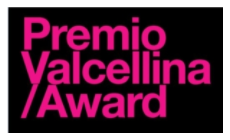Daniel Okrasa + Miriam Synger
POLAND / 2023Daniel Okrasa
SECTION OF THE DRESS: Traditional Folk embroidery from Lublin, Poland
Daniel is a curator at the Central Musuem of Textiles in Łódź in Poland, and wrote to Kirstie in 2022 about the possibility of exhibiting the Red Dress at the Musuem. During their exchange he asked whether there was any embroidery on the Red Dress from Poland, Kirstie explained there were 2 very small motifs added during events in London and Poland but that there wasn’t an official commissioned piece.
We discussed the possibility of organising a panel to be created, and Daniel suggested Miriam Synger (see below!) and then Kirstie asked whether he would also like to create a piece, and he agreed!
“After moment when Kirstie invited me to take a part in The red Dress project, I immediately knew what kind of embroidery I want to make. I decided to stitch a pattern connected with folk culture of Lublin region, where I come from.
Outer ornaments are reconstruction of patterns used in shirts from 1900s and middle part is quotation from embroidery made by Bogumiła Wójcik – folk artist. For my piece I used red, black, yellow and blue – typical for embroideries from Krzczonów/Lublin region. As a background I used white canvas because stitches were made only on shirts made of white or natural colour linen and in this way I wanted to keep the context of traditional pattern. I used a cross stitch technique which was first used in Krzczonów at the beginning of 20th century and came to this region from Russia”.
To contact Daniel: www.instagram.com/okrasadaniel
Miriam Synger
SECTION OF THE DRESS: Star of David (Magen David)
Miriam Synger is a strong woman, a mother, feminist, Orthodox Jewess and author living in Poland. She is a mother to five children, and wants to prove that Jewish life is still possible in Poland. Coming from an assimilated Polish family, she is a third generation Holocaust survivor. And she believes that Poland is not a big cemetery.
“When I received proposition to take part in The Red Dress project, I agreed immediately. This is fantastic idea and beautiful realisation. At one moment I knew what I want to embroider – Star of David (Magen David). This is universal symbol of Jewish people. For me it’s very interesting in its simplicity. Stacked on top of each other two triangles which show 6 parts of worlds, 6 different paths and 6 different directions.
I used a few shades of blue with intense red. For me these are colours of sky and the weather (spaces least available for human beings, yet so much connected with nature), and the colours in my opinion represents human nature – deadly on one hand and full of love from the other”.
To contact Miriam: www.instagram.com/jestem_zydowka
OUR SUPPORTERS
A huge thank you to all who have given their time, energy, enthusiasm, advice, experience and support to The Red Dress project over the years.
In addition to the organisations below, funding has been gratefully received from a number of private donations and via three crowdfunding campaigns in 2020, 2022 and 2024.
In addition to the organisations below, funding has been gratefully received from a number of private donations and via three crowdfunding campaigns in 2020, 2022 and 2024.












"
"